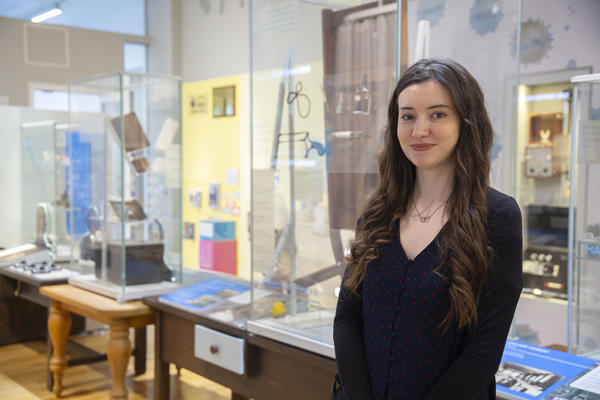New Interactive Displays to Tell Former Hospital’s Story
Wednesday, 07 February 2024
The story of Worcester’s old hospital is set to be brought to life with new interactive displays, thanks to grant funding.
 Harriet Hathaway, Curator at The Infirmary
Harriet Hathaway, Curator at The Infirmary
There will be three new hands-on displays at the University of Worcester-run Infirmary Museum to enhance the visitor experience as well as the University’s teaching provision. This project is being supported using public funding by the National Lottery through Arts Council England of nearly £60,000.
Situated within the University’s City Campus, The Infirmary Museum keeps the memory of the Worcester Royal Infirmary – which once operated from the same building - alive with a series of exhibits about what life was like. These range from medical equipment from different periods to medical uniforms and anatomy models. Visitors who worked or were treated at the hospital are also invited to commit their memories to a display board.
The funding will create three digital interactive stations; an Amputation Station, Microscope Station and Keyhole Surgery Station.
Harriet Hathaway, Curator of The Infirmary Museum, said: “Our museum tells the story of Worcestershire’s hospital formerly on the site, and we are keen to attract even more visitors to share that story further. We believe that the new interactive installations will add extra interest for visitors, particularly our younger visitors, and bring some of the medical procedures and medical discoveries to life. By attracting even more people we can preserve that history for future generations, showing how medical care has changed and evolved over time and the hospital’s place in that journey.”
One section of the Museum is dedicated to the story of a surgeon of the Infirmary who trialled different amputation techniques. The Amputation Station will help children to understand the process in more detail.
The Microscope Station will allow visitors to take a closer look at a variety of slides under a microscope using a digital touch screen animation.
The Keyhole Surgery Station will test the visitors’ surgical skills by providing them with an opportunity to ‘perform’ a key-hole surgery. Visitors will use real medical instruments to manipulate organs in a model body, whilst looking at a television monitor to see the results of their work.
Ms Hathaway said it is hoped that an increasingly interactive side to the Museum will encourage further collaborative work with departments within the University, including the new Three Counties Medical School, providing experiences for students, while also serving the wider public, including schools.
The funding was awarded through Arts Council England’s National Lottery Project Grants, its open access programme for arts, libraries and museums projects, which is funded by the National Lottery. The fund supports thousands of individual practitioners, community and cultural organisations.
Arts Council England is the national development agency for creativity and culture that receives Government funding from the Department for Culture, Media and Sport.
To find out more about Arts Council England funding or apply visit www.artscouncil.org.uk.